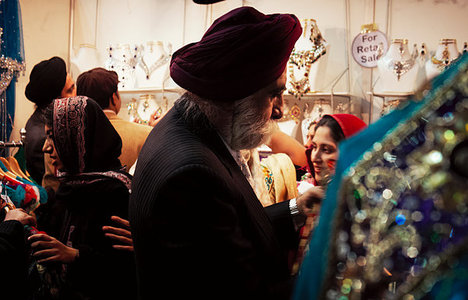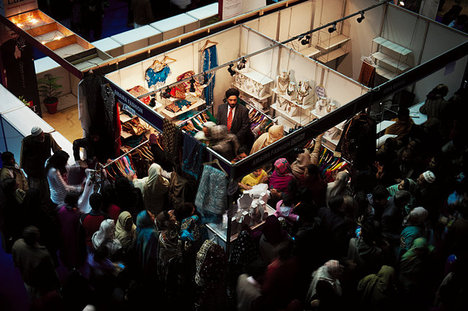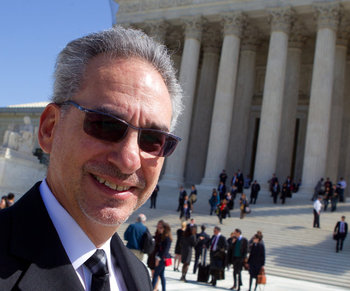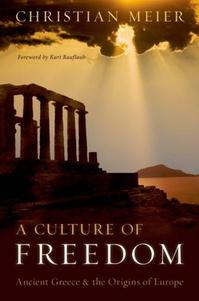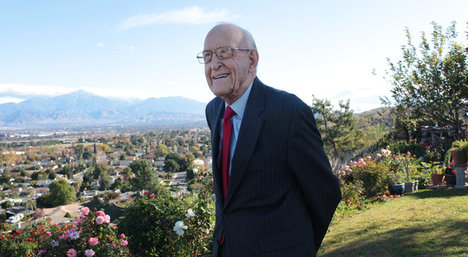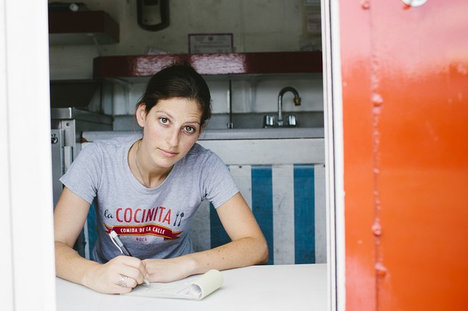 “Rachel Billow is the co-founder of La Cocinita, a food truck in New Orleans that serves Latin American cuisine. She says the city’s requirement that mobile food vendors change locations after 45 minutes in one spot isn’t feasible. “It takes about a half-hour to set up,” she says.” Source of caption and photo: online version of the WSJ article quoted and cited below.
“Rachel Billow is the co-founder of La Cocinita, a food truck in New Orleans that serves Latin American cuisine. She says the city’s requirement that mobile food vendors change locations after 45 minutes in one spot isn’t feasible. “It takes about a half-hour to set up,” she says.” Source of caption and photo: online version of the WSJ article quoted and cited below.
(p. B8) A street fight is brewing between gourmet food-truck vendors and restaurants–not over the grub, but how it’s sold.
Under pressure to protect bricks-and-mortar restaurants from increased competition, several big cities are starting to apply the brakes on a rising tide of food-truck vendors with fully loaded kitchens.
Boston, Chicago, St. Louis and Seattle are among the cities enacting laws that restrict where food trucks can serve customers in proximity to their rivals and for how long. Some food-truck operators argue that they shouldn’t be punished for offering an innovative service, especially since many cities already allow restaurants to open up alongside one another.
“The rules are unfair,” says Amy Le, owner of Duck N Roll, a food truck in Chicago serving Asian-style cuisine that includes short ribs and mango lychee.
Three weeks after she launched the business last fall, she received a ticket from local law enforcement for doing business about 150 feet from a wine bar–50 feet within the city’s limit for how close food trucks can park outside of retail food establishments.
Ms. Le says she later had to spend nearly a full day in court to find out what the violation would cost her–about $300–and that she lost an estimated $600 to $700 in sales as a result.
“The 200-foot buffer prohibits me from competing,” says Ms. Le, 32 years old, who also opposes a new rule requiring food trucks to install global-positioning devices so the city can track their whereabouts. “It is a free market. Let the consumers decide when and where they want to eat.”
. . .
Gourmet food-truck operators say another problem is that in many cities they are still relegated to antiquated rules intended for ice-cream, hot-dog and other traditional mobile vendors with smaller and less complex menus.
New Orleans, for example, requires mobile food vendors to change locations after 45 minutes in one spot, among other restrictions.
“It’s not a feasible amount of time for this business model,” says 31-year-old Rachel Billow, who last year co-founded La Cocinita, a food truck that serves Latin American cuisine such as plantains and arepas. “It takes about a half-hour to set up.”
Ms. Billow says she and her business partner, Venezuelan chef Benoit Angulo, started La Cocinita after several years of working in the restaurant industry. They invested $50,000 in start-up costs, an amount that included $12,000 in modifications to their vehicle to satisfy the city’s fire code, she adds.
For the full story, see:
SARAH E. NEEDLEMAN. “Street Fight: Food Trucks vs. Restaurants; Some Big Cities Jump Into the Fray, Enacting Parking Restrictions to Cope With Rising Tide of Gourmet Vendors.” The Wall Street Journal (Thurs., August 9, 2012): B8.
(Note: ellipsis added.)
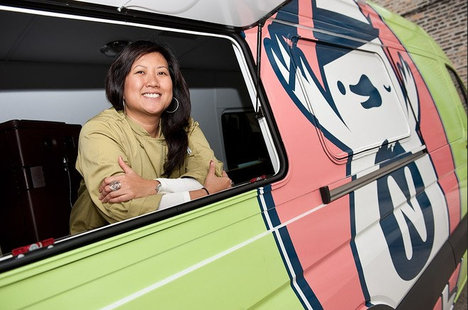 “Amy Le, owner of Duck N Roll, an Asian-style food truck in Chicago, says last fall she received a fine for doing business about 150 feet from a wine bar–50 feet within the city’s limit for how close food trucks can park outside of retail food establishments.” Source of caption and photo: online version of the WSJ article quoted and cited above.
“Amy Le, owner of Duck N Roll, an Asian-style food truck in Chicago, says last fall she received a fine for doing business about 150 feet from a wine bar–50 feet within the city’s limit for how close food trucks can park outside of retail food establishments.” Source of caption and photo: online version of the WSJ article quoted and cited above.

